|
Michael McFadyen's Scuba Diving - Minilog, Philippines
In October 2025 I did a two week long dive trip to the Philippines with my friend John. We spent both weeks at Anilao staying at Buceo Anilao Dive Resort.
There are dozens of dive sites located within 20 minutes run from the resort.
When we visited the first time in 2023, unfortunately we had a Super Typhoon hit the northern Philippines when we were there, so the Coast Guard banned all boats and diving later in the week. As such, there were many sites we could not visit till this later trip.
Minilog is located a bit over five kilometres east-south-east from the resort across the passage off Marikaban Island. It is located in the entrance to the passage between Marikaban Island and Caban Island. A GPS mark for the dive spot is 13° 40' 20.946"N 120° 50' 45.146"E (using WGS84 as the datum).
 |
| A satellite photo from Google Earth that shows the location of the dive site which is above the NAT part of Dapdap Nature Beach Resort and Buceo Anilao Resort at top right |
The dive boat anchors a short distance off the shore to the west of Kandalreo Point. The bottom is only 3 metres deep here and then slopes to 16 metres before dropping a bit steeper to 25+ metres. The bottom is coral and rock rubble with sand in between. We generally dived here between 20 and 25 metres (we did three dives here). The bottom has sea whips, soft corals and many featherstars and some sponges.
From the boat we drop and headed north to about 21 metres where the bottom becomes plain sand with larger coral outcrops. We then headed north-north-east towards the point. Near the boat we saw a couple of tiger pipefish on both dives we did this direction (the other dive we went west, see below). On the second dive here, we actually saw two pairs, one of which appeared to be doing a mating dance! There were plenty of nudibranchs and shrimps (on sea whips and anemones) as some crabs.
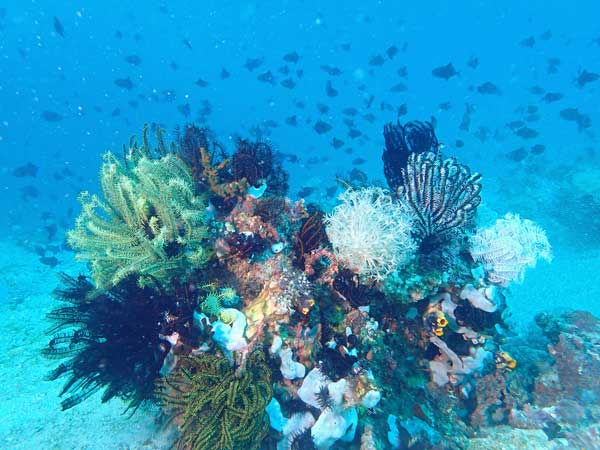 | 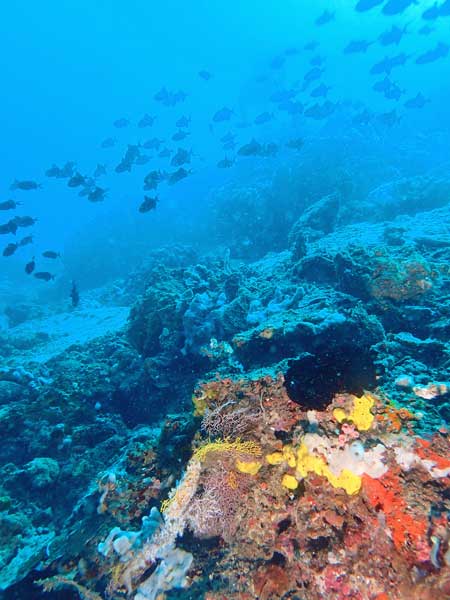 |
| A typical section of the deeper part of the dive | Another section of the reef at this site |
Other things we see on this dive include thousands of niger triggerfish (also called blue or red tooth), a small ribbon eel, a leaf fish, a few lionfish and a nice cowrie.
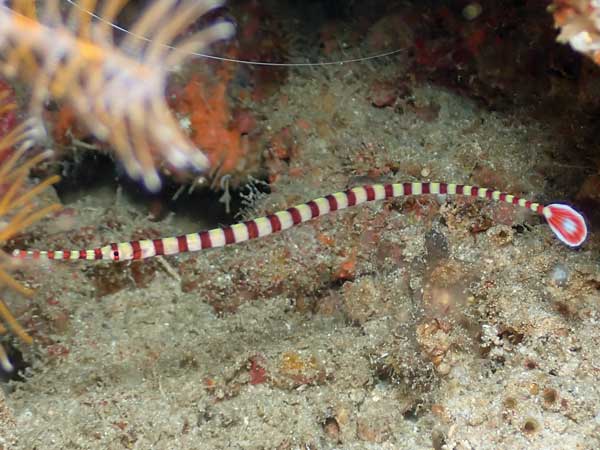 | 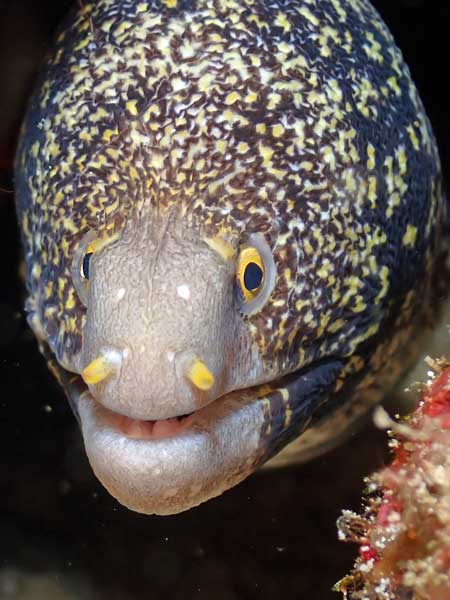 |
| One of the four tiger pipefish we saw | A spotted moray eel |
We come back shallower and end up back at the boat and finish our dive in the shallows. There were a few more species of nudibranch seen here. In October the water temperature was 28C and the visibility was 12 to 15 metres. A very good dive site.
Alternate Dive
On our third dive here, we went west from the boat to a nice wall. This was not very long or high, but it was quite interesting. We saw more moray eels (about four species at least at this site), some small garden eels and more ribbon eels and an ornate ghost pipefish. We also saw some zebra shrimp on fire urchins.
 | 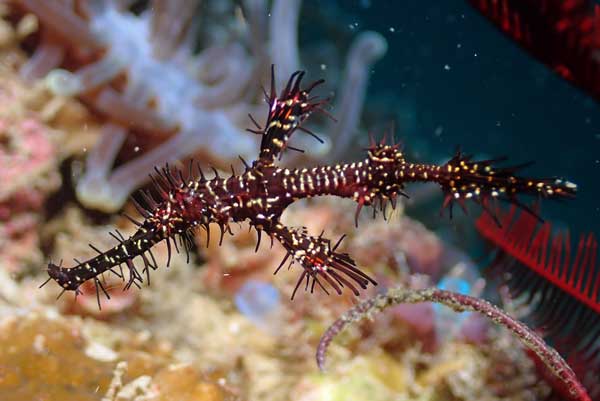 |
| The sand eel partly out of the sand | An ornate ghost pipefish in a featherstar |
A highlight was a large sand eel. These live in the sand and normally you only see their head just under the sand. This one came right out and later swam away before burying itself tail first into the sand again.
Again we came back shallower to the boat. This was probably a more interesting dive than the one to the east.
MORE PHOTOGRAPHS
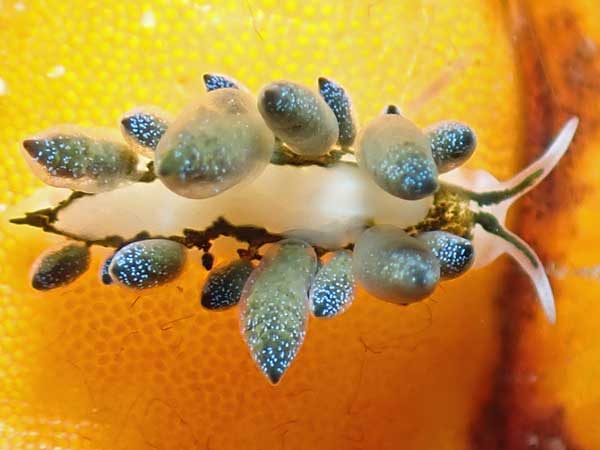 | 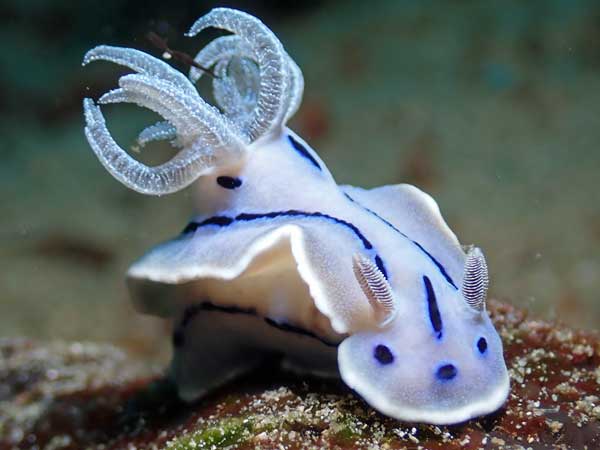 |
| A very interesting nudibranch we saw | A common nudibranch at every site |
 | 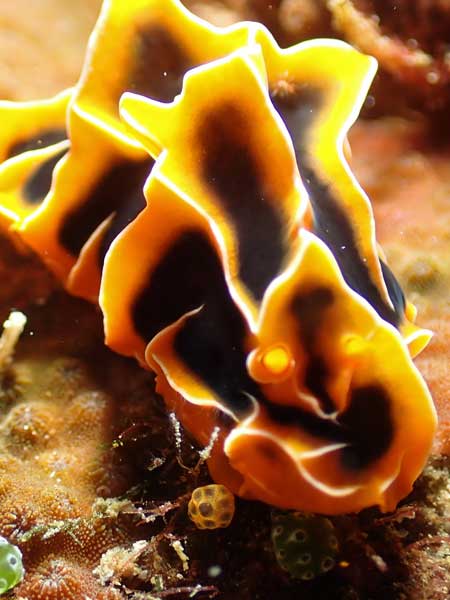 |
| A common nudibranch | Another common one |
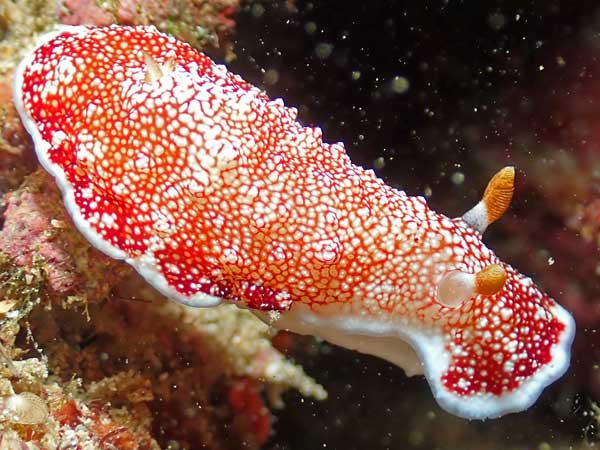 | 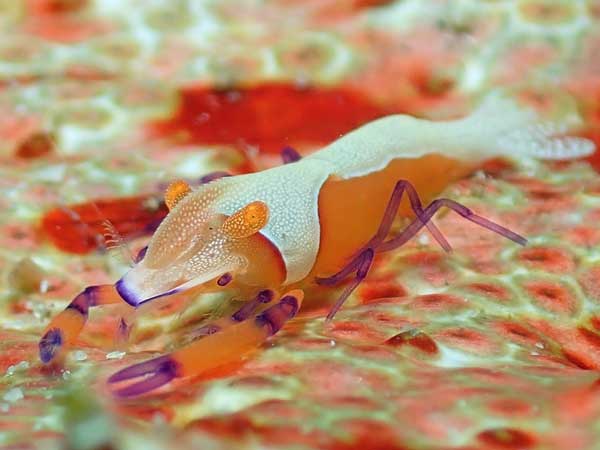 |
| Very beautiful but also common here | A shrimp on a starfish |
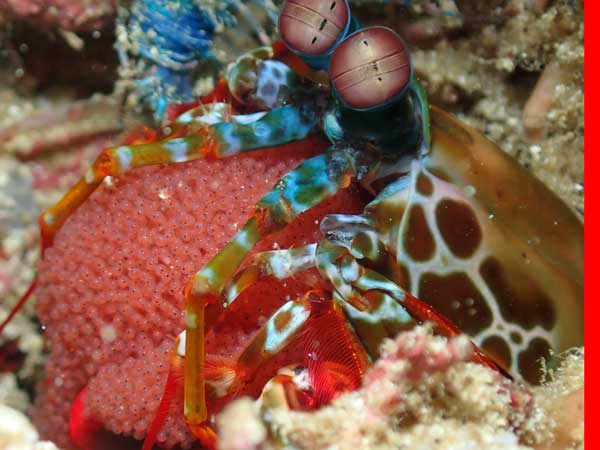 | 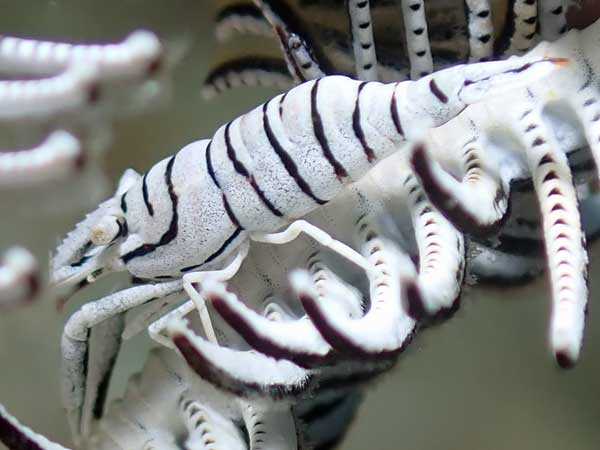 |
| A large mantis shrimp with eggs | A featherstar shrimp |
| 
 v6.00.307 © 2003-2005
v6.00.307 © 2003-2005